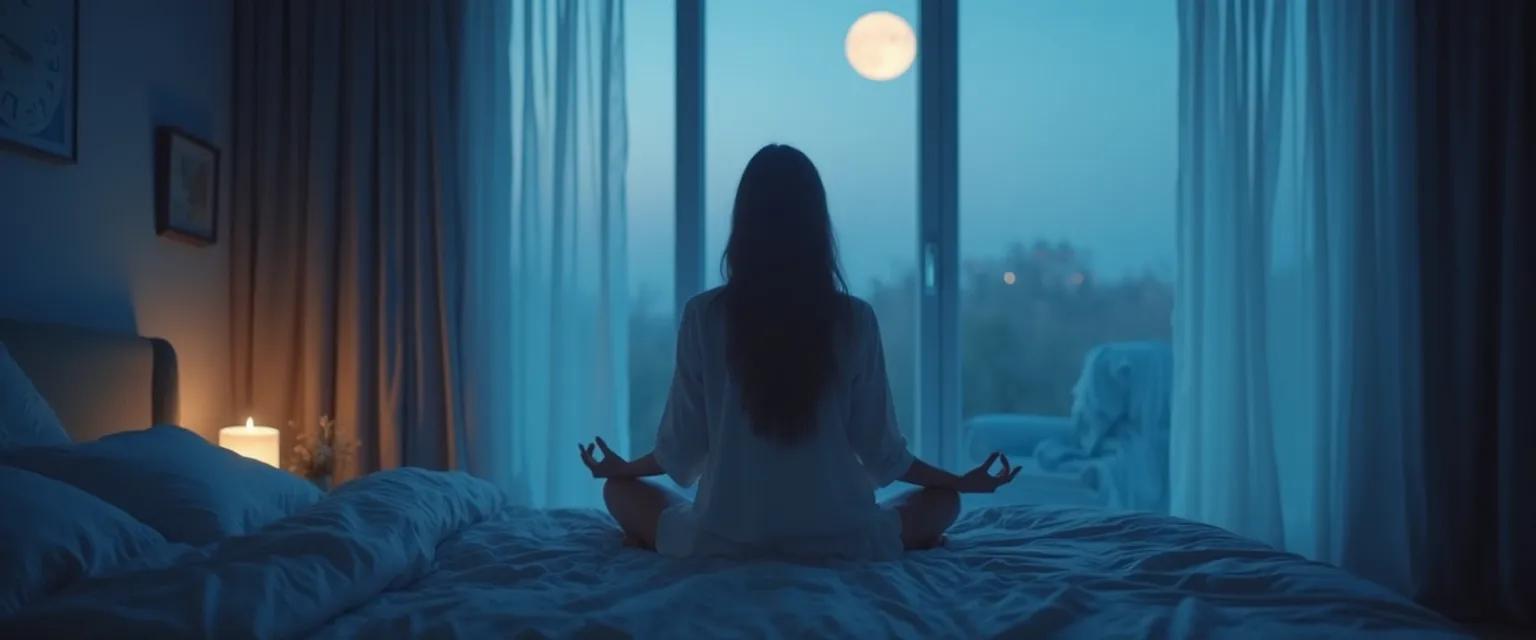Personalize Your Meditation and Sleep Routine for Better Rest Tonight
Ever notice how that one-size-fits-all sleep meditation just doesn't cut it some nights? The connection between meditation and sleep is powerful, but only when tailored to your unique needs. Nearly 70% of adults struggle with sleep issues at least once a week, yet many don't realize that customizing their meditation practice could be the key to better rest.
The science behind meditation and sleep quality is compelling. Research shows that regular meditation practice increases melatonin levels, decreases heart rate, and activates parts of the brain that control sleep. But here's what many guides miss: your specific sleep challenges require personalized approaches. What works for racing thoughts won't necessarily help with physical discomfort or irregular sleep schedules.
When you align meditation techniques with your particular sleep obstacles, you transform a generic practice into a powerful relaxation tool. Let's explore how to create a meditation and sleep practice that addresses your unique challenges.
Matching Meditation and Sleep Techniques to Your Specific Challenges
Different sleep issues require different meditation approaches. By identifying your primary challenges, you can select techniques that directly address them:
For Racing Thoughts and Anxiety
If your mind resembles a hamster wheel at bedtime, focus-based meditation and sleep techniques work wonders. Try counting breaths (inhale for four, hold for seven, exhale for eight) or practice a body scan meditation where you systematically relax each body part from toes to head.
One effective approach is the "thought noting" technique. When racing thoughts appear, mentally label them as "thinking" and gently return to your breath. This creates distance from rumination without fighting your thoughts.
For Physical Tension and Discomfort
Physical discomfort often prevents quality sleep. Progressive muscle relaxation specifically targets this issue by tensing and releasing muscle groups sequentially. This meditation and sleep technique signals to your nervous system that it's safe to relax.
Another option is a visualization practice where you imagine healing light or warmth spreading through areas of tension. This combines the benefits of meditation and sleep imagery with physical relaxation.
For Inconsistent Sleep Schedules
If your sleep timing varies, anchor your meditation practice to consistent cues rather than specific times. Create a trigger-based routine (like meditating after brushing your teeth) that works regardless of when you go to bed.
Time-flexible meditation options are also helpful—have both a 5-minute and 15-minute practice ready depending on your energy and available time. Consistency in technique, even with varying durations, strengthens the association between meditation and sleep improvement.
Creating Your Ideal Meditation and Sleep Environment
Your surroundings significantly impact meditation effectiveness. Customize your sleep environment to enhance your practice:
Temperature plays a crucial role in both meditation and sleep quality. Research shows that a slightly cool room (around 65-68°F) optimizes both practices. Consider using a weighted blanket during meditation to create a sense of grounding that carries into sleep.
Sound customization matters too. While some benefit from complete silence, others find that specific sound frequencies (like 432Hz music or brown noise) enhance their meditation and sleep experience. Experiment with different audio options to find what helps your mind settle most effectively.
Lighting adjustments can strengthen the meditation-sleep connection. Try dimming lights gradually during your practice, signaling to your brain that it's time to transition from meditation to sleep. Some find that meditation with eyes slightly open in a darkened room creates the perfect bridge between wakefulness and rest.
Evolving Your Meditation and Sleep Practice Over Time
Your sleep needs change with life circumstances, so your meditation practice should evolve too. Pay attention to how your body responds to different techniques and be willing to adjust.
Track your sleep quality after different meditation approaches. Notice patterns like falling asleep faster after certain practices or experiencing fewer middle-of-night awakenings with others. This mindful attention helps refine your personal meditation and sleep formula.
As your practice deepens, you'll likely find that shorter meditation sessions yield stronger sleep benefits. This efficiency comes from your brain learning to associate specific meditation cues with sleep readiness. The relationship between meditation and sleep strengthens with consistent practice, creating a powerful tool for lifelong sleep health that adapts to whatever challenges arise.




